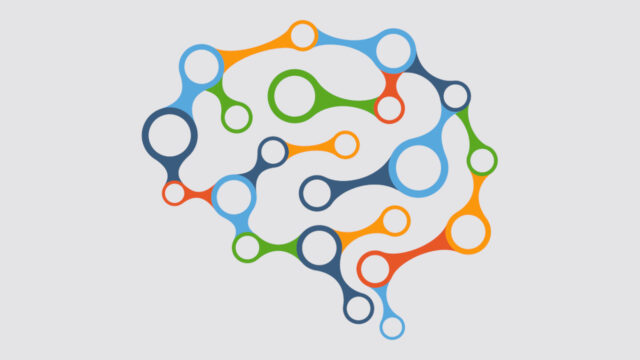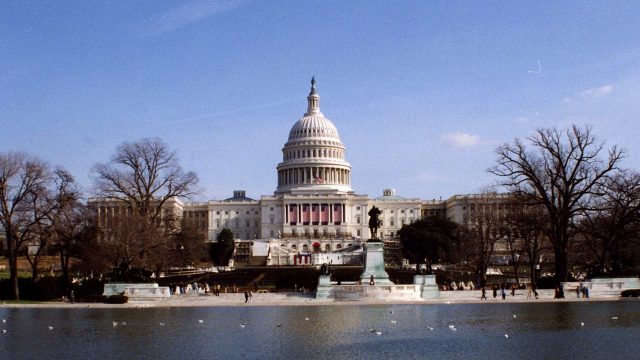
US climate change mitigation strategy requires system thinking and defined requirements
Systems thinking and requirements definition are missing in action
Readers of my articles can refer to my October 2021 discussion1 focused on knowledge management (KM), critical thinking, and requirements definition in legislative decision making and solution finding.
One dimension I discussed was the value of reading early in my career Peter M. Senge’s book, The Fifth Discipline2. One of the important tenets of the book, still relevant today, is the idea of a “community(s) of inquiry and experimentation” and how this is and should continue to be a continuing model for thinking and course of action decisions. Inquiry and experimentation lead to an improved ability to independently form (new) opinions, beliefs, and discover new facts and insights to further enrich and support decision making; and I would add not only at the personal level, but also as importantly at the national and international decision-making levels.
The pursuit of innovative ideas and more effective solutions to challenges and problems, relying in part on evidence-based research and learning (e.g. lessons learned), and critical thinking3, involves sharing one’s ideas not only in professional communities but also broadly sharing these ideas publicly in speech and through media channels. Diversity of thought and perspective is necessary and required. Cancellation of unpopular views and of thinking that is different from one’s own beliefs is always self-defeating. Diversity of thought and the subsequent discussions of diverse ideas, with a mind open to learning new facts or concepts, is necessary on the pathway to solution finding.
While one can disagree with the solutions, approaches, and outcomes used to derive the solution(s), one also must also be able to discern fact from emotion and opinion. This applies to developing a reasonable, balanced and successful national climate change mitigation strategy.
Systems thinking is missing in action
The definition of systems thinking has evolved. For example4, according to Steve Brown, Deputy Director of Collaborative Learning and Strategic Insight at Southern New Hampshire University (SNHU):
Systems thinking is about investigating what set of factors and interactions are contributing to or could contribute to a possible outcome … Systems thinking is useful in helping teams become more aware of how they’re interacting with each other and within the team, and it helps them understand the outcomes they’re producing.
Discussions, strategies, and sustainable solutions to mitigate climate change impacts would clearly benefit from a systems approach (holistic, multi-dimensional) since climate change and its impacts are intertwined across many social, political, and economic ecosystems and environments.
Online search for climate change mitigation solutions shows a lack of systems thinking
My search for a comprehensive, multidimensional statement of a US national climate change mitigation strategy produced no meaningful result. I did find many organizations’ “statements of objectives (SOO),” (a what) without underlying strategies (the how) to deliver the outcomes. These SOOs read as “independent and not interdependent” across multiple government departments and organizations. Few mention any relationship or interdependency with the private sector, although many private sector organizations are bound by government legislative, regulatory, and policy goals and objectives they must individually achieve within their industry sector (e.g. energy, environment, others).
Resolving climate change challenges is complex and interdependent… and this demands our thinking and approach be complex and interdependent as well in order to develop and implement “fit for purpose” solutions. Holistic thinking is a fundamental characteristic of systems thinking:
- Consider the whole over the parts, and
- The whole can be greater than the sum of its parts.
As discussed previously, systems thinking requires “diversity of thought and perspective” which is critical. I see systems thinking grounded in a simple definition of knowledge, that is, leveraging all of the information (explicit, codified) and all of the experience/insight (tacit/personal) in an organization to derive better solutions and deliver better decisions to continuously improve performance.
Trying to resolve a simple or complex problem set by focusing only on the part that directly impacts what you see through a single lens always risks failing to see the outcomes’ impact on others and thus the sustainability of the solution. This can often lead to creating new problems or worse, never solving the original problems.
Integrated National Climate Change Mitigation Strategy – common value and a shared narrative – possible?
I do not underestimate how unimaginably complex developing and implementing a holistic and multi-dimensional national climate change mitigation strategy is. Relying on the patchwork of political, singular, or divergent “approaches” that exists is a losing strategy. While many of these approaches are ecologically and environmentally sincere and thoughtful descriptions of what to do, many are driven by disingenuous social, political, and economic agendas that may or may not at their core seriously address a sustainable climate mitigation strategy.
Our national policy on energy independence is an example. This is in fact a “collision of theory with reality.” We are environmentalists when gas is $2 a gallon. The fact is that the US was energy independent in January of 2021. We are no longer and a reason was the administration’s focus on one sector driven underpinned by political motivation without fully appreciating the relationship energy has to every part of our lives. Not systems thinking.
A national climate change mitigation strategy must focus on shared outcomes, must be holistic, requirements-based, and must be focused on defined needs. Clear and unambiguous consensus measures of success across the US economy, public sector (federal, state, and local), and private sector (business and households) are necessary. This leads to the question “How can the US commit to an international climate change mitigation strategy without first defining our desired outcomes and requirements…developing a strategy that is “fit for purpose” and “bottoms up?” There is significant risk that agreeing to international measures of climate change mitigation solutions before the US develops agreed to domestic measures of success may force us to pursue unachievable outcomes and unsupportable timelines that could impact the development of a sustainable national climate mitigation strategy.
Developing a successful, consensus-based national climate change mitigation strategy can make one’s mind explode when considering all of the moving parts and players. Is it achievable and is it realistic within the desired timelines needed (this is a separate discussion)? Granted, there are focused, individual mitigation actions that can be pursued, but, independently, will these actions solve challenges or create new ones?
An extraordinarily difficult challenge to model?
We know we can succeed when faced with complicated technical challenges requiring complicated solutions. Consider the remarkably successful James Webb Space Telescope, a massive, multi-decade program comprised of many people from across the public and private sectors.
This program5 began in September 1989 when the Space Telescope Science Institute (STScI) and NASA co-hosted the Next Generation Space Telescope Workshop. In 1996, an 18-member committee formally recommended that NASA develop a space telescope that would view the heavens in infrared light. Three teams made up of scientists and engineers from the private and public sectors met to decide whether NASA could realize the committee’s vision. All three came to the conclusion that the proposed telescope would work. NASA agreed in 1997 to fund additional studies to refine the technical and financial requirements for building the telescope. By 2002, the agency had selected the teams to build the instruments and the group of astronomers who would provide construction guidance. Also in 2002, the telescope was formally named the James Webb Space Telescope, after the NASA administrator who led the development of the Apollo program. Engineers and astronomers innovated new ways to meet the Webb telescope’s scientific demands, as well as a mission at an unserviceable distance from Earth. Construction on Webb began in 2004 and Webb launched in December 2021.
The James Webb telescope integrated extraordinarily challenging requirements and developed a multi-dimensional program strategy to launch this spacecraft. The interdependencies needed for success were complex. Systems thinking, lessons learned from other space projects, defined requirements, extraordinary program management, and clear measures of success resulted in the successful launch and deployment of the Webb.
Note that NASA achieved this over 30+ years.
Knowledge management, systems thinking, and critical thinking are linked and required
Climate change impacts will only increase. Webb began over 30 years ago. Many believe we are way behind in developing a climate change mitigation strategy that is implementable across our private and public sectors. It is clear to me that the current approach is marginal.
Practically speaking, this is a discussion that must be focused on outcomes, should be requirements-based, and should be focused on actual needs. So what defines success? What are the cost, schedule, technical, fiscal, social, political, and environmental challenges? How are the cost, schedule, and technical challenges balanced (trade-offs for best value) to achieve the best possible outcomes? What are the implementation details and do they align with the requirements? For critical thinking and evidence-based analysis to guide decision-making, the tendency to discuss this through a lens that lacks political competition must change. Practically, this is not an all-or-nothing situation. Sound business judgment and collective common sense underpin meaningful consensus.
Behavior change is a parallel challenge that must be part of requirements definition and success measures – begin with the end in mind
Knowledge management practitioners and program managers alike know that successful, complex projects require behavior change, in fact, and very importantly, cultural (behavior) change is required. The multi-dimensional business case for climate change mitigation is evidence-based, supported by data from multiple sources. A national strategy for a future “climate balanced” environment requires consensus on defining the current state, defining the elements of transition, and consensus on what is “successful and measurable climate change impact mitigation.” And the “how” is complex.
Critical is the flow down from strategy to execution… changing minds, sharing systems thinking, value, and benefits. Success must be believable at the personal level. Great strategies fail when the execution lacks buy-in from those doing the executing. Prosci’s Tim Creasey says6 that:
We apply change management because it has a distinct and pointed focus on benefit realization and achieving desired results and outcomes from change. When embarking on our change management journeys, we begin with the end in mind. The end is successful change. And the means to that end is applying a structured approach to help individual employees adopt and use changes that impact them.
He also explains change management as “the application of a structured process and set of tools for leading the people side of change to achieve a desired outcome.” It is not by accident that the phrase “achieve a desired outcome” completes the definition. By framing change management in this results-oriented way, we overcome assumptions about change management being merely the soft side of change. Change management ensures benefit realization by addressing one of the most critical elements of it: the people side of change.”
There is a required connection between the people who are expected to accept and take part in a change and realizing desired outcomes of that change. I believe that this is a fundamental challenge in realizing successful climate change mitigation.
Yes, I know this is complex. One step at a time.
Header image source: American Association for the Advancement of Science (AAAS) SciLine.
References and notes:
- Kaplan, B. (2021, October 2). Knowledge Management and Critical Thinking: Congress, Legislative Outcomes and Systems Thinking. LinkedIn Pulse. ↩
- Senge, P.M. (1990). The Fifth Discipline: The Art & Practice of The Learning Organization. New York: Doubleday/Currency. ↩
- One definition: critical thinking is the analysis of facts to form a judgment. The subject is complex; several different definitions exist, but which generally include the rational, skeptical, and unbiased analysis or evaluation of factual evidence. It entails effective communication and problem-solving abilities as well as a commitment to overcome native egocentrism and sociocentrism. ↩
- Morganelli, M. (2020, March 18). What is Systems Thinking? Southern New Hampshire University (SNHU) Newsroom. ↩
- STScI. (n.d.). Mission Timeline, Webb Space Telescope. Space Telescope Science Institute (STScI). ↩
- Creasey, T. (n.d.). Explore the Levels of Change Management, Begin With the End in Mind. Prosci. ↩






Thanks Bill for your very valuable perspective, which is supported by the systems thinking research that we’ve published in RealKM Magazine and my own extensive socio-ecological systems work. It also aligns with recommendations I’ve made for better climate action knowledge systems at an international level.
However, while systems thinking can improve systems leadership at the local and regional scale, the massive and diverse array of knowledge that needs to be brought together for a systems approach at a national or international scale is as you say unimaginably complex.
This knowledge overload can result in decision paralysis. As Lt. Col. Kevron W. Henry writes in the U.S. Army’s Military Review for a similarly knowledge-rich battlefield decision-making context:
As Henry highlights, there is a need to be able to cut through the mass of available knowledge to be able to focus only on the “critical knowledge” needed for particular decisions. Former NASA Chief Knowledge Officer Roger Forsgren writes about this approach in his new book Lean Knowledge Management: How NASA Implemented a Practical KM Program which I look forward to reading.
A way of achieving the incorporation of systems thinking in decision-making while at the same time mitigating against the risk of knowledge overload decision paralysis is through using the most appropriate decision-making approach for the decision-making level, as I have written about in a previous RealKM Magazine article.
Great additional insights and agree Bruce